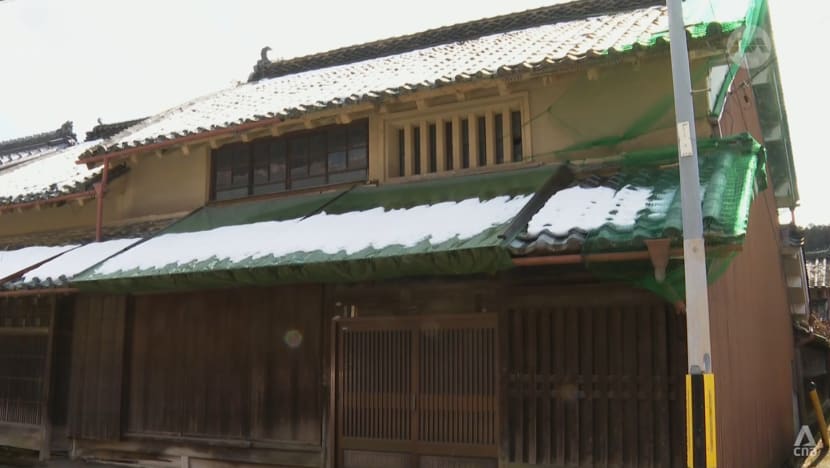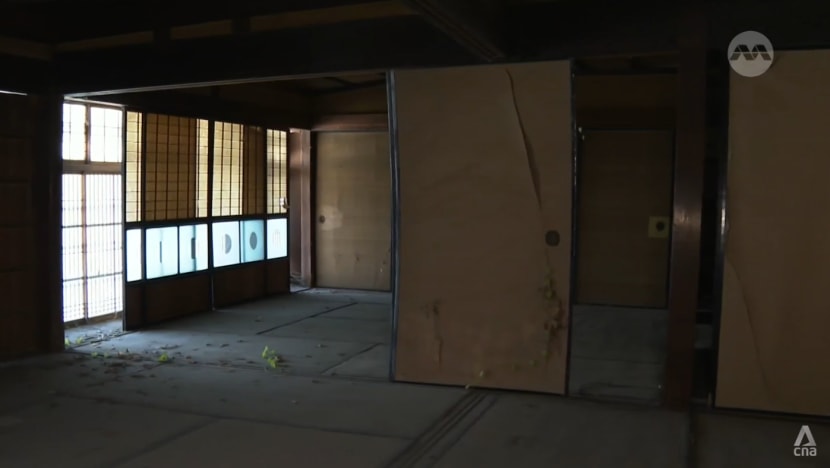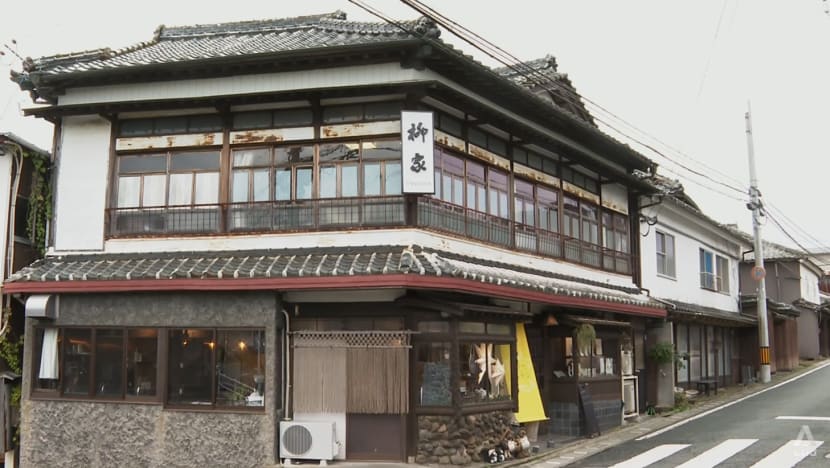1 in 3 homes in Japan could be abandoned by 2038, say experts
Rural towns are offering grants to new and returning residents in hopes of reviving abandoned homes, as young people move to bigger cities for work.

An akiya, which was once used as a clinic, in Uda, Nara prefecture, Japan.

This audio is generated by an AI tool.
UDA, Japan: Uda community leader Yoshiji Misaki is doing a survey to gather data on abandoned homes in the rural city in Nara prefecture.
Almost one in five houses in Uda are vacant homes, known as akiya.
One such abandoned property which Misaki showed CNA is a house which has stood largely untouched for 25 years.
A doctor once lived and ran a clinic in this home, but his family moved away after he died.

His son Shigeaki Nakao, who is the current owner living in another part of Nara, said there is a caretaker who checks on the house, and the family has its reasons for letting it fall into disrepair.
“My grandmother lived there, but she died 40 years ago and it became an akiya. My father (who ran his clinic there temporarily) was against lending it out. We have our graves there. We used to pay our respects twice a year, but we stopped,” said Nakao.
He said that the family wishes to sell it as none of them intends to make use of the place.
Misaki, who is also chairman of the Udano Design City Council, said Uda’s population has halved over the past 60 years.
This reflects a demographic trend of young people moving to bigger cities for work, leaving behind shrinking, ageing rural towns.
Some experts predict the number of akiya across Japan will more than double to 23 million, or one in three houses, by 2038.
Most akiya are not in living condition before renovation, with the worst at risk of collapse.
These empty homes are either “very old”, or have been left to “become a garbage dump” when they could not find a buyer, Misaki said.
AKIYA A CHALLENGE FOR TOWN REJUVENATION
The latest figures show that Uda has about 1,000 akiya, 300 more than five years ago.
The local government is looking at how these neglected homes can attract residents as part of its rejuvenation strategy.
The city hands out as much as 2 million yen (US$14,000) as business grants for akiya renovation.
"If it's dilapidated and impossible (to renovate), we label it as (a) risk akiya. When the central government declares a risk akiya, the local administration is supposed to demolish it," said Uda’s city policy promotion chief Takahito Suzuki.
Suzuki added that the government has not set any regulations on reusing akiya.
Some towns like Uda are buying up akiya and renovating these abandoned properties to accommodate residents for short-term stays or creating akiya banks.
Properties for sale by city councils or private operators are listed on such banks to facilitate transactions.
ATTRACTING BUYERS FROM ABROARD
Cheap akiya listed for sale also draw buyers from abroad.
Pictures on a real estate listing led French photographer Coline Emilie Aguirre to uproot her life and move to sleepy Uda.
She is now among the 380 foreigners living in Uda.
Aguirre bought an akiya for US$33,000, roughly half the price of a new home in the area.

She warned that renovation costs can offset the savings.
The house was not connected to tap water or sewage, like the vast majority of akiya that require repair.
"I have invested up to US$60,000. I’m planning to invest probably the same amount in the next three years," said Aguirre, who is just halfway through her renovation, three years after moving in.
She intends to open up part of the home as a guesthouse after renovations are complete.
BREATHING NEW LIFE INTO AKIYA
Residents of Kitsuki, an ancient castle town in Oita Prefecture, are breathing new life into akiya.
Kitsuki, located in Japan’s southwest, has seen its population decline rapidly from 34,000 to 26,000 over the past two decades.
There are 39 per cent of residents over the age of 65, and akiya make up 24 per cent of all homes there.
“Within a year, along 100m (of this street), eight elderly residents died. At the same time, their homes are becoming akiya,” said Kitsuki resident Noriko Ogura.
Her family's 150-year-old restaurant, Yanagiya, almost became an akiya, as she and her children did not want to run the business.

Ogura initially thought she had no choice but to demolish the property.
“However, that would mean memories of the local community will disappear too, and that will sadden everyone. So, I started thinking of how to keep it,” said Ogura, who turned Yanagiya from a restaurant to a shared space.
The space has a ground floor rented out for gatherings and events, with renovated rooms upstairs providing lodging, which has already seen a steady stream of bookings.

The success story has spurred the community to band together and restore the town to its former glory.
Kayoko Goto and her 92-year-old mother reopened their family-run restaurant as an ice cream shop 30 years after it closed.
In addition, the owners of the town's sake brewery, Nakano Brewery, are looking into the hotel business.
The brewery’s proprietress Chika Nakano wants to utilise akiya and increase the number of guesthouses.
“That's my dream,” she said.
ATTRACTING RESIDENTS WITH GRANTS
Local authorities said some residents who left the town are returning, attracted by relocation and business grants.
Families who relocate to Kitsuki and buy a home can get 2 million yen in grants.
The city also gives residents who start a business up to 1.8 million yen in subsidies.
Oita prefecture’s press officer Rio Kawahigashi said that more residents are returning to utilise akiya to start new projects.
“If those who utilise akiya form and strengthen their network, I think there will be more ideas for the utilisation of akiya,” she added.

















